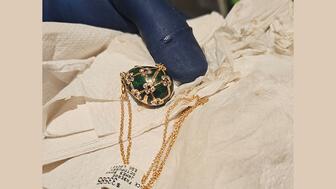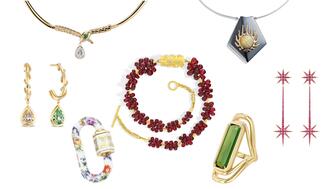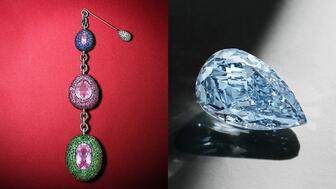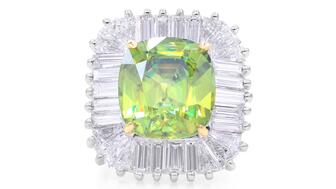The luxury goods company said founder Ippolita Rostagno will remain at the brand’s helm.
Three strategies for combating big competitors
Columnist Jan Brassem reminds independent jewelers of the advantages smaller, more nimble organizations have over big-box and chain stores.

As the old Bob Dylan song goes, “the times, they are a-changin.’”
That “warning” is especially compelling in today’s dynamic jewelry industry. It’s time for the jeweler to swallow hard, take a deep breath and start developing the skills to identify, and then sagaciously evaluate, those changes. Changes that could lead to growth in the near future or, as often happens, lead to frustration or worse.
In other words, it’s time for the store owner to develop a strategy--assuming he/she (let’s call her Mary) hasn’t done that already--to identify and then evaluate trends in her geographic market.
One of the easiest approaches, of courses, would be to identify, through formal and informal investigation, any well-financed, well-managed and well-known jewelry chain planning on building/buying a store there. If the competitor, a “gorilla,” is moving in tomorrow without Mary’s knowledge, shame on her.
When and if Mary gets word of the gorilla’s impending arrival, she should quickly develop a defensive strategy. To be more precise, a strategy to adapt to the changes and dangers that almost certainly will appear if they are not around the corner already. It’s time for a full-throttle defense using the heap of written strategic resources at Mary’s disposal.
Here are some thoughts that may help Mary develop a two-phase strategy for battling the beast.
The first phase. Design an accurate situational analysis--how strong is her market position? There are, of course, numerous business school-developed analytical tools available at most book stores, libraries and even on Google.
She could start with these: SWOT (her market Strengths, Weaknesses, Opportunities, Threats); CI (her market Competitive Intelligence); Blind Spot Analysis (my favorite, which I learned at NYU business school); “GE Business Screen Matrix;” and a host of others.
Good analysis flourishes in the jewelry industry, as they do in most other industries.
In Torrington, Conn., for example, Lisa Soliani, owner of Hatfield & Co., acquired a small jewelry store originally located in a small strip mall next to an Army recruiting office. Through a SWOT analysis, Lisa realized she faced an established gorilla in a sleepy mill town about three miles away.
She took quick action and acquired a building lot about 10 miles from the gorilla. She built a free-standing jewelry store on the lot with appealing physical features.
Hatfield Jewelers is now near three big-box stores and a number of smaller retailers. The area is
The second phase. There are indeed nuggets of collected wisdom from some of industries smartest and most innovative businesspeople, including jewelry thinkers.
Many independent jewelers, for example, have joined forces to become successful gorilla fighters. One of these organizations is California-based Leading Jewelers Guild, a 70-store cooperative, guided by Jimmy West, which has been exchanging best practices and has developed into an excellent management and operational “to-do” resource.
Of course, there are also some very nimble big gorillas, as well as some stodgy executives in small companies. Gorillas, in other words, come in all shapes and sizes as do the jewelry companies that slay them. You get the idea.
For the sake of this discussion, we are simply deliberating smarts versus brawn. We are looking for ways to prevent the gorilla from eating us.
Before we list a few techniques to use in halting, or at least wounding, the gorilla, there are a few undeniable facts that puts the big player at a distinct competitive disadvantage, namely the constraint of an immense budget, a political organization and an abundance of time. These are missiles for the small jeweler and a curse for the gorilla.
Since the small jeweler doesn’t have the budget or head count, Mary is forced to make choices. She and her team have to think harder with more force, with better focus, with superior motivation and with surprising innovation. But her lean organization also allows her to make decisions quicker.
On the other hand, gorillas with their huge budgets simply throw money at problems. They have the money and manpower but Mary has the time and the opportunity to think hard, innovate and execute. These efforts will have a longer lasting and more powerful effect on her store.
Not all the following three strategies will work for the smaller jewelry store but many will. None of these are silver bullets or “fire-and-forget” tools, of course, as all require work and energy. Remember, many gorillas may see the Mary-types as a scrappy competitor with next to nothing to lose.
Thin ice. Always look for a place to find an edge. Create your own thin ice where the gorilla won’t go.
Mary’s store is, and should act like, a local brand. Start by joining local organizations (e.g., the YMCA and the local country club) and spread the word to local schools and groups that you are the owner of a small jewelry retail brand with a large, out-of-town jewelry chain breathing down your proverbial neck. Hire an intern, or interns, from the local high school.
Organize programs for key political players to join you on sourcing trips to jewelry shows (JA New York, JCK, the shows in Hong Kong and Baselworld.)
Design questionnaires to gauge local tastes and preferences to maximize the brand. Join social networking organizations and cater to local schools and colleges. Insulate and differentiate your brand from the gorilla.
Speed. Gorillas have a culture of processes. You have, or are developing, a culture of speed.
Gorillas form a style evaluation committee for a particular piece or line while Mary simply places that style or line in her showcase. Gorillas form subcommittees. Mary places a second style in her showcase. Gorillas form an evaluation team to evaluate the first style. Mary is shipping her third style.
Today, it’s safer to make decisions on opinion, as gorillas do. You make decisions on evidence, which is faster, correct and dependable.
Fighting dirty. The key point here, of course, is to do no harm to the gorilla or to the store. Mary should shy away from the gorilla’s massive advertising budget and focus her small spotlight on her store, matching her trumpet with the gorilla’s orchestra.
For example, Mary could (should) offer better prices, or at least have a mixture of loss leaders, to fight the gorilla’s higher price structure based on its overhead and costs. Maybe the gorilla will be forced to change its pricing strategy.
Instead of spending advertising dollars, Mary could write articles in the local newspaper that her store brand is the only store in town that sells silver jewelry (assuming the gorilla doesn’t) or that it has the best employee benefits in town (assuming it does) or that the gorilla’s parent company is rumored to be owned by a foreign company.
Finally, instead of looking at the gorilla and being intimidated by its size and power, don’t forget to think how the gorilla must be viewing you and wondering what they stand to lose.
Remember, the mouse fears the elephant as much as the elephant fears the mouse.
The Latest

Laura Burdese, who joined the Italian luxury brand in 2022, will take on the role in July.

The National Jeweler editors revisit the most noteworthy industry happenings and design trends from 2025.

How Jewelers of America’s 20 Under 40 are leading to ensure a brighter future for the jewelry industry.

Need a gift for the cat lover who has everything? Look no further than our latest Piece of the Week.


It purchased the “Grosse Pièce,” an ultra-complicated Audemars Piguet pocket watch from the ‘20s, for a record-breaking price at Sotheby’s.

The lab-grown diamond grower now offers custom engagement and fashion jewelry through its Kira Custom Lab Jewelry service.

Roseco’s 704-page catalog showcases new lab-grown diamonds, findings, tools & more—available in print or interactive digital editions.

Chandler got his start at Michelson Jewelers and has served as DCA president and CEO since 2001. He will retire at the end of the month.

The boutique is slated to open this week inside Terminal 8, offering pre-owned Rolex watches and more to international travelers.

Sponsored by Digital Monitoring Products

The special-edition egg pendant ingested in a New Zealand jewelry store was recovered after a six-day wait.

Associate Editor Natalie Francisco plays favorites with Piece of the Week, selecting a standout piece of jewelry from each month of 2025.

The “Love and Desire” campaign is inspired by the magic that follows when one’s heart leads the way, said the brand.

Two awardees will receive free tuition for an educational course at the Swiss lab, with flights and lodging included.

Berta de Pablos-Barbier will replace Alexander Lacik at the start of January, two months earlier than expected.

Sotheby’s held its first two jewelry sales at the Breuer building last week, and they totaled nearly $44 million.

Winners will receive free registration and lodging for its fourth annual event in Detroit.

Here are six ideas for making more engaging content for Instagram Reels and TikTok, courtesy of Duvall O’Steen and Jen Cullen Williams.

The honorees include a notable jewelry brand, an industry veteran, and an independent retailer.

Carlos Jose Hernandez and Joshua Zuazo were sentenced to life without the possibility of parole in the 2024 murder of Hussein “Sam” Murray.

Yood will serve alongside Eduard Stefanescu, the sustainability manager for C.Hafner, a precious metals refiner in Germany.

The New Orleans jeweler is also hosting pop-up jewelry boutiques in New York City and Dallas.

Set in a Tiffany & Co. necklace, it sold for $4.2 million, the highest price and price per carat paid for a Paraíba tourmaline at auction.

The jeweler’s “Deep Freeze” display showcases its iconic jewelry designs frozen in a vintage icebox.

Take luxury gifting to new heights this holiday season with the jeweler’s showstopping 12-carat sphene ring.

This year's theme is “Unveiling the Depths of the Ocean.”
























